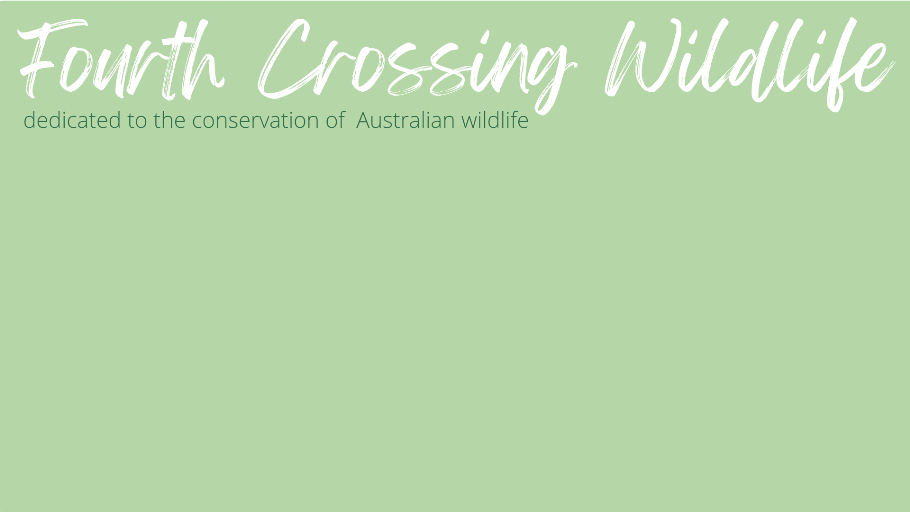Wildlife Resources
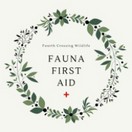
Prolapse in a Marsupial Joey
by Linda Dennis
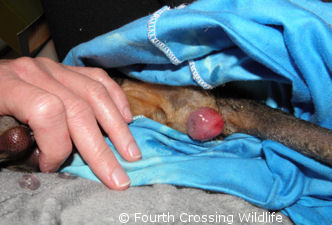 Prolapse in a Swamp Wallaby joey 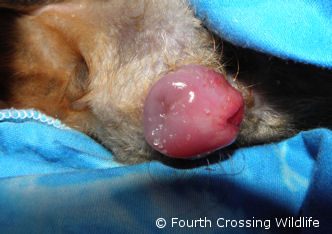 Close up of the prolapse 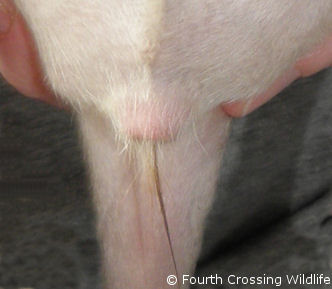 The way a cloaca should look (Red-necked Wallaby joey) | What is it? A prolapse is when part of the bowel lining (the mucosal lining) protrudes from the cloaca (as pictured at left). The cloaca will be very sore and swollen and will be quite painful for the animal. How is it caused? There are a few reasons for a prolapse. 1. the animal is constipated and continually pushing, trying to pass poo; 2. ongoing diarrhoea;3. over stimulation when toileting. How to avoid it? 1. It is vitally important to ensure that the animal is kept adequately hydrated while in care. For adults, ensure that there is fresh water available daily. For joeys, this may mean giving water bottles in between milk feed bottles – remember that the milk substitute we offer them is food and not water! This is particularly so with Wombaroo fed joeys. Wombaroo is a very thick milk formula and it is imperative that water bottles are also offered. When using Biolac or Di-Vetelact extra water may not be required, but constant checking is needed at all times, which ever formula is used. Obviously, more water is required on hotter days. 2. Diarrhoea should never be ignored! If the diarrhoea can’t be stopped within 3 days then it’s time to get your animal off to the vets ASAP. Of course, use your own judgement, if the diarrhoea is severe then get to the vets sooner rather than later. 3. When toileting a marsupial joey you only need soft, gentle rubbing to stimulate the joey into passing wee and poo. If the joey has not begun to toilet in 30 seconds – or is not showing signs that is about too (cloaca opening and closing) - cease toileting. How to treat it. It is important to ensure that the entire cloaca area is kept well lubricated during a prolapse. The animal will need to be transferred to a clean environment so that dirt, etc, does not get onto the bowel lining. For less severe cases sugar (fine) can be mixed with an oily solution (Vaseline, Paw Paw Ointment, Baby Oil Gel, etc) and applied to the cloaca. The sugar makes the bowel lining contract back in and the oily solution keeps the area lubricated. Haemorrhoid cream can be applied to the area. This also shrinks the bowel lining back into the cloaca. For severe prolapses, and when the above treatments don’t work, a vet will need to anaesthetise the animal, manually push the lining back into place and then insert a stitch to keep it in place. A prolapse should never be left for long as the bowel lining becomes dry it will become quite difficult to treat. If an improvement hasn’t been seen in around 2 hours from the time of prolapse then veterinary help is required ASAP. A vet will also give an anti-inflammatory, antibiotics and probably pain medications for the animal once the stitch is in place. After the stitch is in place, the sugar and oily solution can be applied to help keep the bowel lining in place. |

